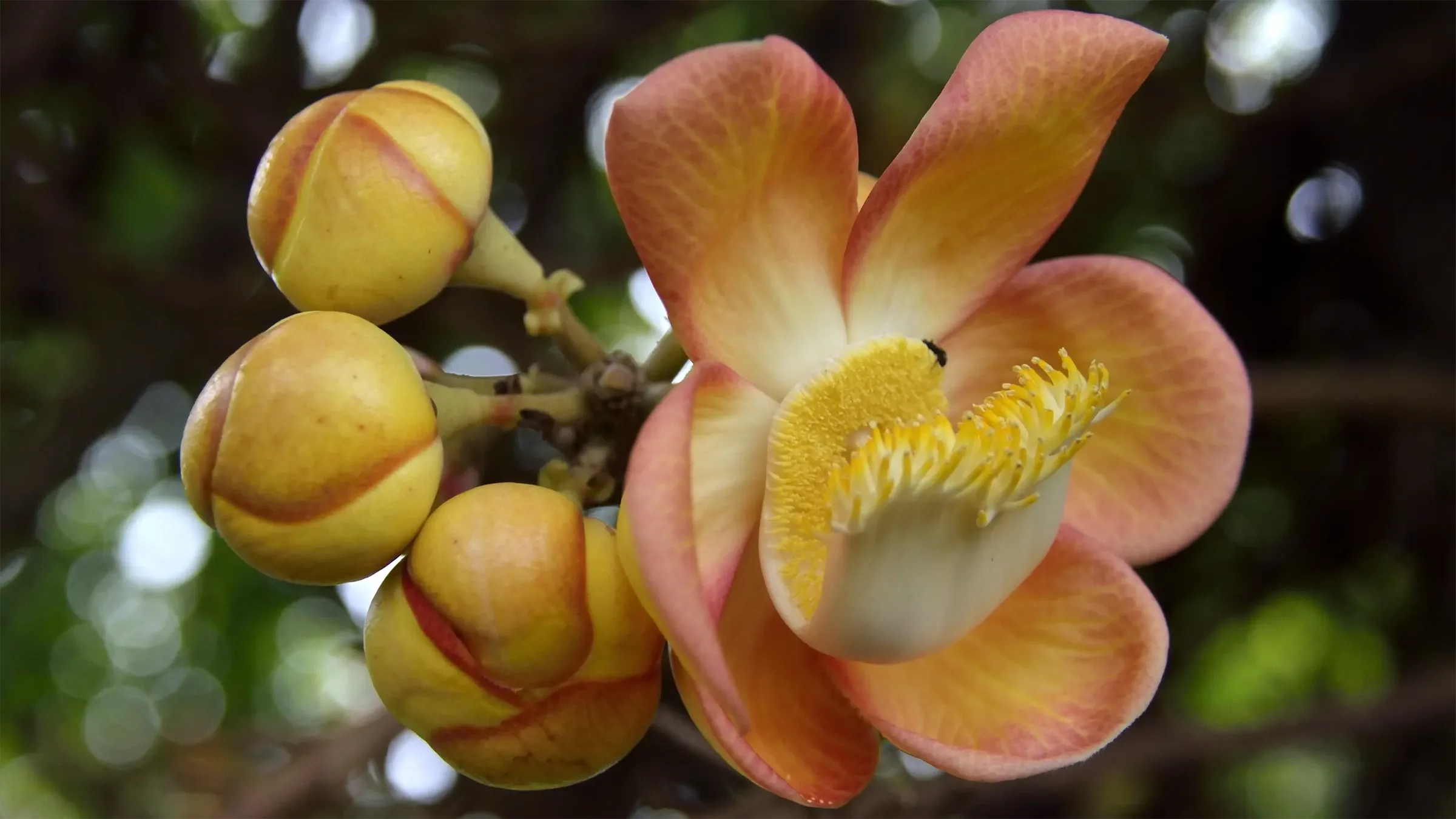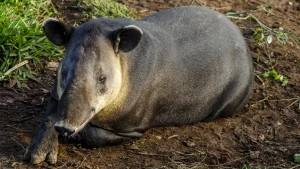Lancetilla Botanical Garden

The Lancetilla Botanical Garden is the only botanical garden in Honduras and one of the largest in all of Latin America. It has an area of 1680 hectares, of which 1261 ha are for a Nature Reserve, 350 are for plantations and 70 ha correspond to an Arboretum.
The Botanical Garden is administered by the National University of Forest Sciences (Unacifor) The botanical garden is part of the BGCI and presents works for the International Agenda for the Conservation of Botanical Gardens. Its code of international recognition as a botanical institution, as well as the acronym of its herbarium is LANCE.

History
The year 1925 was the year of the birth of Lancetilla, when Dr. Wilson Popenoe chose, commissioned by the United Fruit Company, the Lancetilla Valley as the most suitable in terms of different types of soils and a variety of microclimates, to install a research base, for the study of banana diseases and to analyze the most viable methods to cultivate other tropical fruit plants.
Doctor Wilson Popenoe was the first director of both the Botanical Garden and the attached Lancetilla Experiment Station . Under his direction, more than a thousand varieties of plants of economic importance were gathered, which were analyzed, selected, propagated, improved and distributed. Several million specimens, mostly shoots and grafts, have left this season bound for all of tropical America.
In its early years Lancetilla played a great role in the exploitation of the genetic resources of the African oil palm ( Elaeis guineensis ). Vegetative material being sent from Central America to Colombia. So it can be said that the large oil palm plantations in the new world have their origin in Lancetilla .
The same can be said about the crops in tropical America of Asian fruits such as Lychee (Litchi chinensis Sonn.) And Rambutan (Nephelium lappaceum), which also originated from Lancetilla . America’s largest plantation of Mangosteen ( Garcinia mangostana ), is located in Lancetilla .
Large numbers of rubber trees (Hevea brasiliensis) were also introduced from Brazil, with the intention of looking for specimens resistant to fungal infections. These rubber tree plantations spread throughout Central America and played a key role as suppliers of rubber in abundance to the US during World War II.
Another of the key plantations was that of the cinchona tree ( Cinchona ledgeriana ), which provides the remedy to cure the Malaria disease. Especially in the 1940s and 1950s, when its cultivation spread throughout Central America (especially in Guatemala and Honduras). Undoubtedly due to the armed conflicts that were taking place in Southeast Asia.
Location
The Lancetilla Botanical Garden and Research Center is located on the coast of the Caribbean Sea 7 km southeast of the city of Tela, in northern Honduras, 340 km from Tegucigalpa, 90 km from San Pedro Sula
It is divided into three different zones: The Reserve, the Arboretum and the Plantations. The surface of the entire Botanical Garden is approximately 1680 hectares, located at a height above sea level between 20 and 800 m.
Species
Lancetilla has also been the center for research and improvement of crops and production of citronella grasses and the well-known lemon tea in Central America. It is currently listed as a germplasm bank for research inside and outside the country.
This place is the cradle of the main fruit crops on which the economy of the northern part of the country rests: African palm, rambutan or mangosteen, to mention some of the crops in the sector, while others are booming, such as the case of the licha as such.
The park also houses medicinal species and a series of peculiarities of the country, such as a collection of orchids, including the Rhyncholaelia digbyana, a species that is the national flower that is currently being cultivated. In addition, there are 16 species of bamboo that give way to majestic scenery.
It is part of the Mesoamerican Biological Corridor and has around 2,500 tropical species, between native and exotic. Of the latter, it has plants from several continents.
To date they have identified more than 345 types of birds, 77 species of mammals, 41 of fish, 45 types of reptiles, 26 of snakes and 21 types of amphibians.
The Arboretum
One of the most visited areas of the garden by tourists, at least 50,000 annually, is the Wilson Popenoe Arboretum, named after the first director of the garden. It comprises 78 hectares of plants from Africa, Asia, Oceania and America.
It houses a collection of more than 1,200 species of tropical plants, available for scientific and educational research, and has natural and veneered trails.
The botanical garden also has an orchid with more than 91 species, among popular and beautiful plants, including the national flower of Honduras.
The Herbarium
The Lancetilla Herbarium is currently a local reference herbarium. You are currently with approx. 2,000 species and 4,200 samples, mostly material from the Lancetilla reserve and other areas on the Atlantic coast.
The Tela Railway Company initially established a Herbarium in Lancetilla and soon began to make massive collections of the Flora near Lancetilla and between San Pedro and Tela. Especially Standley was working in this year and published in the 30s the Flora of the Lancetilla Valley. There are also works on the exploration of Flora at this time by researchers from Harvard University, USA. Duplicates of these collections are currently in the Herbarium of Escuela Agricula Panamericana Zamorano.
After the 1970s, collections were made by Donald Hazelet and by students from national universities. In recent years there have also been duplicates from other Botanical Gardens such as Missouri or Fairchild in relation to collections that members of these institutions made on the Atlantic coast. However, it is necessary to remember that many of the duplicates of the collections made in relation to Lancetilla were not returned to the herbarium.
Projects
The following Projects or Programs at this time support and are related to the Lancetilla Botanical Garden
- Strengthening of the Lancetilla Botanical Garden and Research Center, SETCO with the support of the Honduras – Canada Environmental Management Fund, CIDA. Ochna spec.
- I-To-I: Voluntary Service from England
- Integrated Expert Program, CIM-GTZ, Germany
- Institutional cooperation at national and international level:
- Honduran Tourism Institute, National Sustainable Tourism Program to strengthen the Lancetilla Botanical Garden
- Mamuca, La Masica, Honduras: Production of plants for reforestation
- Broadleaf Forest Management Network of Honduras (REMBLAH): Specific support agreements
- Honduran Ecologist Network for Sustainable Development (REHDES): Support and implementation of a biological monitoring program in the biological corridor of the Caribbean.
- Rio Platano Biosphere, Honduras: Specific cooperations
- Fairshild Botanical Garden, Florida: Support Struts
- Montgomery Botanical Center, Florida: Cycadaceen Conservation
- Herrenhäuser Gärten, Hannover, Germany: Technical consultancy, special Orchids
- IUCN, Regional Office, San José Costa Rica: Technical support in the development of the Strategic Plan for the Lancetilla Botanical Garden.
- Belize Botanical Garden, Knowledge and staff exchange.



